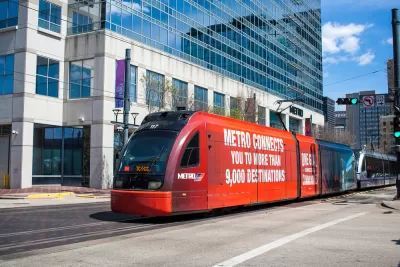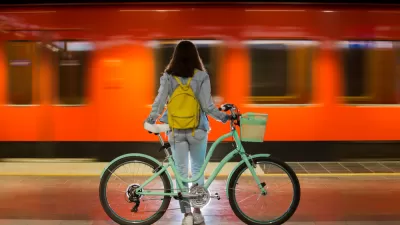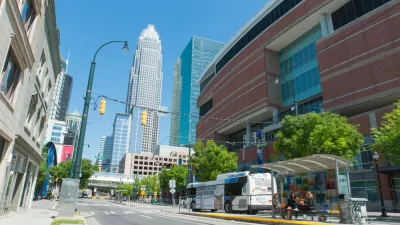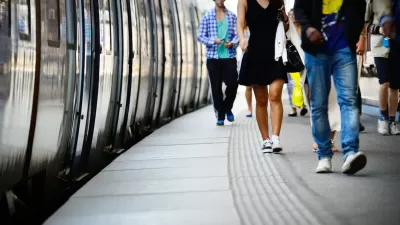The city is investing more in biking, walking, and public transit, but a lack of funding and counterproductive moves from the Texas Department of Transportation are slowing the process of shifting away from personal automobile dependency.

“Although highway expansion continues in the region and driving remains the primary mode of transportation for most Houston-area residents, the city continues to inch away from its reliance on personal cars and trucks while expanding its infrastructure for cyclists, pedestrians and mass transit users,” writes Adam Zuvanich for Houston Public Media.
“The city recently was awarded a $21 million federal grant for a transformative project on a 3-mile stretch of Telephone Road in the southeast part of town, where vehicle lanes will be reduced while bike lanes, wider sidewalks and improved connections with METRO – the region's public transit provider – will be added.” Similar projects are in the works across the city, which has added 400 miles of bike lanes since 2017.
Zuvanich notes that regional governments, such as Harris County and the Houston-Galveston Area Council, have also increased support for multimodality. “The shift is in the interest of increased safety – there were more than 300 traffic-related fatalities and 1,600 serious injuries in 2021, according to Fields – and reducing the region's carbon footprint.” Local boosters say that multimodal transportation options will also help the city stay competitive and spur economic development.
However, Houston still lacks robust investment in non-driving modes. “For example, Houston has a budget of more than $5.7 billion for this fiscal year and the Houston Bike Plan allocates a little more than $1 million annually for bike-related projects,” Zuvanich writes. Meanwhile, the state’s department of transportation continues to push freeway widening and expansion projects, despite local opposition, digging the city into a deeper hole when it comes to car dependency, according to advocates like Harrison Humphreys, the climate programs manager at nonprofit Air Alliance Houston. “We're digging out of it with a spoon, and TxDOT's got an excavator digging the hole deeper.”
FULL STORY: Houston inching away from car-centric reputation with slate of multimodal infrastructure projects

Trump Administration Could Effectively End Housing Voucher Program
Federal officials are eyeing major cuts to the Section 8 program that helps millions of low-income households pay rent.

Planetizen Federal Action Tracker
A weekly monitor of how Trump’s orders and actions are impacting planners and planning in America.

The 120 Year Old Tiny Home Villages That Sheltered San Francisco’s Earthquake Refugees
More than a century ago, San Francisco mobilized to house thousands of residents displaced by the 1906 earthquake. Could their strategy offer a model for the present?

Alabama School Forestry Initiative Brings Trees to Schoolyards
Trees can improve physical and mental health for students and commnity members.

NYC Outdoor Dining Could Get a Re-Do
The city council is considering making the al fresco dining program year-round to address cost concerns from small businesses.

HSR Reaches Key Settlement in Northern California City
The state’s high-speed rail authority reached an agreement with Millbrae, a key city on the train’s proposed route to San Francisco.
Urban Design for Planners 1: Software Tools
This six-course series explores essential urban design concepts using open source software and equips planners with the tools they need to participate fully in the urban design process.
Planning for Universal Design
Learn the tools for implementing Universal Design in planning regulations.
Ada County Highway District
Clanton & Associates, Inc.
Jessamine County Fiscal Court
Institute for Housing and Urban Development Studies (IHS)
City of Grandview
Harvard GSD Executive Education
Toledo-Lucas County Plan Commissions
Salt Lake City
NYU Wagner Graduate School of Public Service





























